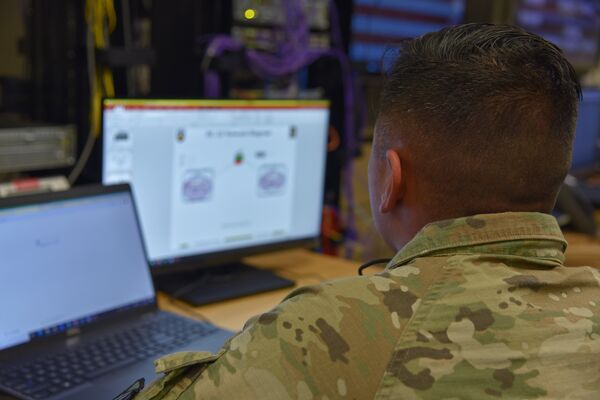
A US Army network engineer at Joint Modernization Command works on creating the Project Convergence Mission Partner Environment at Fort Bliss, Texas. (US Department of Defense)
US Army units have begun employing a new variant of the Mission Partner Environment (MPE) network, allowing service commanders to exchange data more freely with allies and partner country forces downrange.
The Secure but Unclassified (SBU) variant of the MPE is employed across service formations deployed in the United States Army Europe and Africa (USAREUR-AF) area of responsibility, said US Army Major General Anthony Potts. “That's how they're actually running [operations] over there, in an SBU network bringing in their mission partners” via the new MPE variant, said Maj Gen Potts, who is the Program Executive Officer for Command, Control and Communications – Tactical (PEO C3T).
The development and eventual employment of the SBU MPE network variant were driven by the need to eliminate some of the network-centric roadblocks hampering data exchanges between the US armed forces and their allies worldwide.
As conceptualised, the MPE network aims to provide seamless information-sharing capabilities such as real-time online chat, email, and file sharing, along with collaborative intelligence sharing and analysis of technologies between US commanders and their counterparts in NATO and other partner countries, at the Secret and Below Releasable Environment (SABRE) classification level.
Data moving between army commanders and allied counterparts within the MPE does so relatively unfettered, as long as the data moves only within the MPE network and meets the classification requirements.
Looking to read the full article?
Gain unlimited access to Janes news and more...







